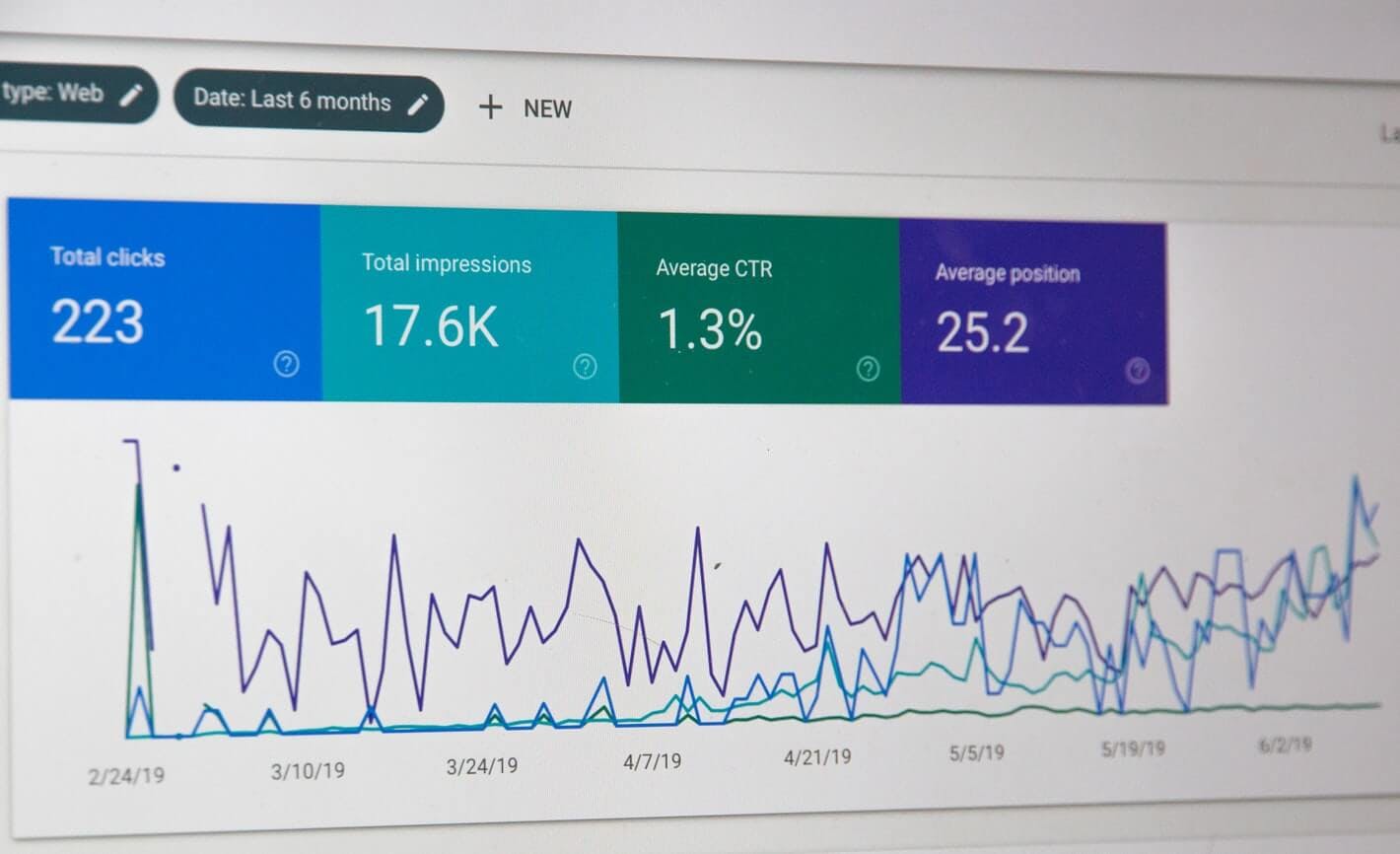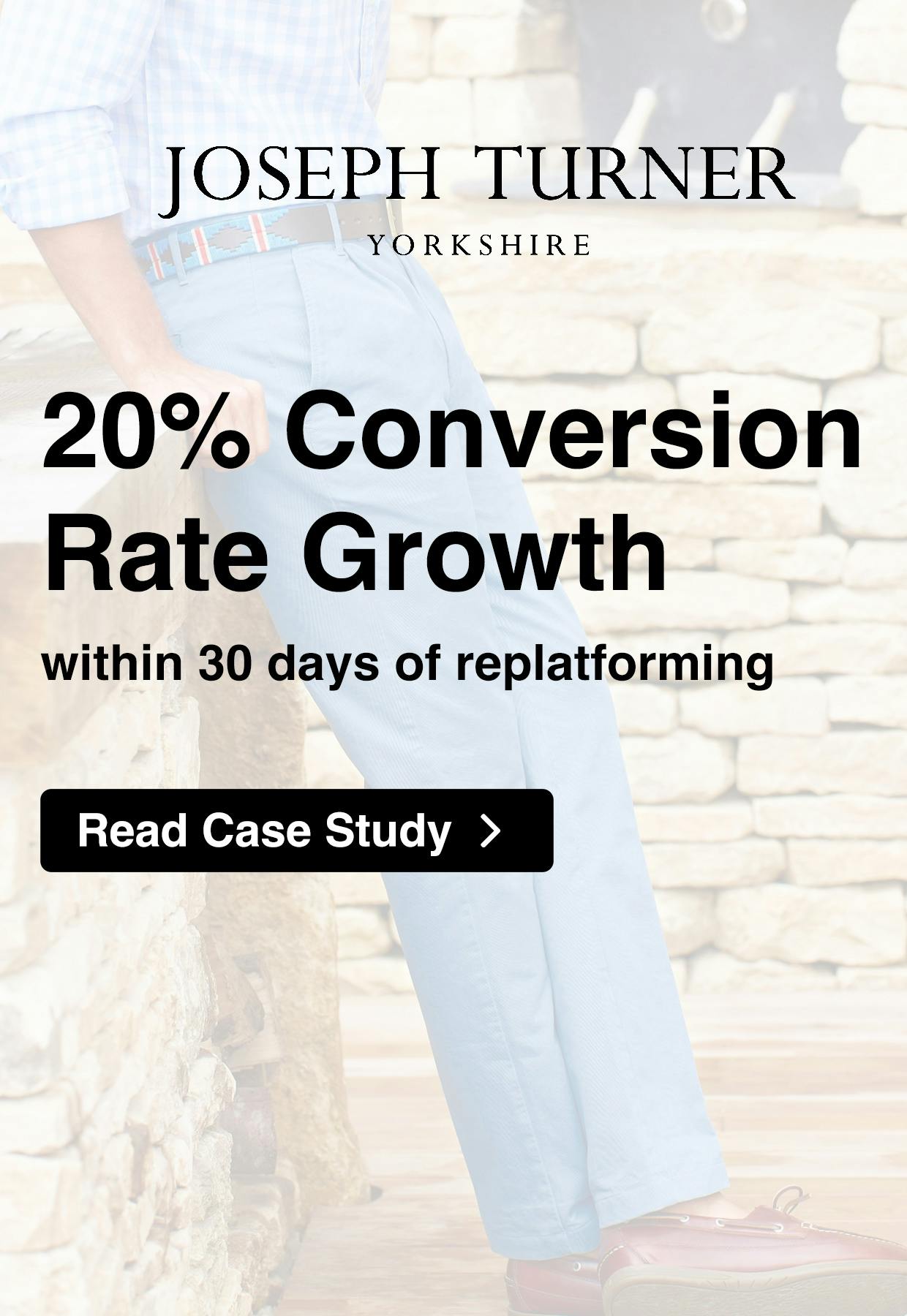

How to optimise your CRO strategy for commerce sites
How to Optimise CRO Like a Pro
Conversion Rate Optimisation (CRO) is a term that has become mentioned more often in the world of eCommerce. For many marketers, CRO is an essential part of their overall marketing plan as it can help drive traffic to your website and potentially lead to transactions being made on your commerce site or channels.
Despite what CRO can do for your website, in order for it to be effective, it must be planned and optimised properly. Failing to include the correct features and therefore, create a cohesive customer experience, will ultimately lead to customers becoming disengaged and ultimately leaving your website without completing a transaction.
Are you looking at creating a CRO plan for your commerce site? In this article, we will attempt to include everything you need to know about CRO in order to get started.
What is Conversion Rate Optimisation (CRO)?
Conversion Rate Optimisation (CRO) is essentially the process of enabling users to take certain actions on your commerce website which could potentially lead to a transaction being made. If a website is designed with the correct CRO tools, a business can potentially increase the chances that its site visitors will make a purchase before they leave. Such desired actions can include:
Subscribing to a mailing list
Clicking on links
Clicking on a commerce ‘call to action’
Completing an online purchase or subscription
Upgrading to a higher level of service
It is believed that CRO tools such as these can contribute to a substantial increase in your return on investment (ROI), which is a reason to have a strong CRO plan in place.

Commerce sites are usually built with the best intention of converting visitors into customers. These conversions can potentially occur within several locations on a website including the homepage, blogs and landing pages to name only a few (a bit more on these later). These pages can also be optimised to achieve a higher number of conversions.
Now that you have a basic understanding of CRO, it’s time to break down how to plan for a quality strategy.
Steps to take for a CRO plan
Planning for CRO optimisation requires careful planning to ensure that clicks are converted into transactions. This requires a journey that includes research, tests, result examination and revision where appropriate.
Step 1: Research
Before you begin to track your success, you must first decide on which actions are related to your business. These can include CRO tools such as those mentioned earlier. Regardless of which you choose, these will act as your key performance indicators (KPIs) that will allow you to make the following calculation:
Conversion rate = total conversion / total site visits
In order to establish your KPIs, it will require an understanding of your respective niche, customer personalities and individual goals of your commerce business, while ensuring that you gain feedback from those who visit your site.

It would be advisable to look at the websites of your competitors to determine which features are user-friendly and which aren’t. This should aid you in making the tough decisions about the tools you think will be successful for you – in theory at least. Once you have these ideas in place, you can start to measure your success down the line.
Step 2: Begin to make hypotheses
Once you have the required data, you can then begin to develop a testable hypothesis to focus your potential CRO techniques. Aspects to focus on should include what elements or pages of the commerce site should be modified along with which customer demographic you are targeting.

Remember, a hypothesis should be specific and suggest a change that can realistically be implemented and measured for its effectiveness. For example, you could hypothesise that ‘including a new ‘call to action’ promotion on all of our primary site banners will increase conversion rate by 20%’. This is a feature that can realistically be implemented and measured, with a target that you could either achieve or urge you to make further amendments to meet the target in future.
Step 3: Test your theory
At this point, it’s time to test your theory through A/B testing. What is this, you ask? A/B testing is when you change a single variable and present both versions of the page to two different groups of site visitors. It helps if you have a ‘headless’ front-end commerce website as ideas and CRO changes can be easily implemented without any effect on the back-office commerce code or processes.
Examples of these variables could be the following:
Calls to action
Changes made could include text size, colour, font and position of key messages on the page
Pictures and videos
Images and videos placed on different parts of the commerce site
Trust signals
Such as testimonials and reviews and where these are placed on your website
Site-copy
The main text on the page including page headings, text body, product descriptions and site navigation menu including any sub-navigations and filters
Pop-ups
Enabling different pop-ups including specific commerce promotion offers and banner ads
Remember, more than one change can be tested at a time, so you can get a great idea of which experiments work better than others.
Step 4: Result Analysis
When analysing your results, the question to ask yourself is whether any of your hypotheses have come to fruition and if so, to what extent and how conclusively? You should refer back to your original goals and KPIs when making your conclusions.

When looking at your results, you should take several factors into account, including the number of sessions and the conversion rate. Remember, there is nothing to worry about if your initial theories do not materialise the way you hoped – this is a trial-and-error stage where negative results are just as handy as those that meet or even exceed targets. Regardless of the results, you can take these into account when planning your future commerce CRO strategies.
Which CRO commerce marketing strategies should you use?
Now that you have an idea of the steps required when planning your CRO strategy, you may be asking about the CRO commerce marketing strategies themselves. These strategies will obviously be the key to your CRO plan and will therefore have a huge influence in the overall success of your commerce website’s customer traffic and conversion rate. The following are popular strategies that have been tried and tested successes.

Include text-based ‘call to actions’ (CTAs) within blog posts
Although CTAs make great general practice when included within blog posts, these can fail to have the influence we’d like over our target audience. Sometimes, ‘banner blindness’ can occur, whereby the reader becomes accustomed to banner-like information – such as CTAs – and therefore doesn’t take too much notice of them. In addition, readers don’t always read an entire blog, which means that a different approach may be required.

As an alternative, text-based CTAs can be used. An example of this could be to have a standalone line of text that links to a commerce landing page, which could be styled as an h3 or h4. For example, one blog post could be relatable to another, which the text-based CTA could indicate:
This text-based CTA clearly invites the reader to click on the link and engage further with the website. As a result, it encourages the ‘customer journey’ and increases the time spent on the site, which makes it more likely for a customer to make a purchase.
Optimise your best-performing blog posts
If you’ve been blogging for a lengthy period, the chances are some of your blog posts will outperform others. Regardless, this should be reviewed every so often as blog posts are a great opportunity for conversion rate optimisation.

Firstly, it would be ideal to identify the blog posts with high levels of web traffic, but low conversion rates. You should review why the conversion rate is low, as most likely it will be down to the content offer you’re promoting not being aligned with the blog post’s content, or your CTAs could be unclear.
On the opposite end of the spectrum, you should also look into blog posts with high conversion rates. With these posts, you want to drive more website traffic to these destinations which you can achieve by optimising the content for the search engines or by updating the content to ensure that it’s fresh and relevant.
Test your commerce landing pages
Commerce landing pages are one of the most important marketing tools at your disposal. Any landing page is where a customer can engage more with your commerce brand and make purchases, it is essential that these pages are of the highest quality. For this reason, these pages should be tested through A/B testing.
If you are unsure of what to test, refer back to ‘Step 3: Test your theory'.
Add a message to high-converting web pages
Adding a message tool can potentially increase your commerce site conversion rate, especially if you add these to high-performing web pages such as product pages. This makes it more likely for transactions are made rather than customers leaving your website.

In addition, you can also take a more active approach in terms of messaging. An example could be using a chatting tool whereby a member of staff or a bot could answer any queries a customer may have. A common strategy is for a chat tool to automatically pop up once a respective customer has spent a certain amount of time on certain commerce site pages. An example would be a customer visiting a product page, and after 30 seconds of inactivity, a chat pop-up appears, asking if the customer requires any assistance.
Make the most of re-marketing campaigns
Despite what your conversion metric might say, the reality is that most users on your website won’t take the desired action that you want. By utilising re-marketing campaigns, you can target users who have previously left your website.
Re-marketing works by tracking visitors to your commerce website and serving them with online ads, even when they visit other sites. In particular, this can be successful when you re-target those who visit high-converting pages on your site. However, in order for this to be successful, you will require these pages to include engaging copy, image(s) and a unique offer.
Make your ‘customer journey’ simple
The key to a high commerce conversion rate is to make your website both engaging, while also being simple to navigate through. Quite often, the customer wants to get to their desired destination to either engage with a salesperson or purchase a product via the site itself. For this reason, making the site structure so that the customer is only performing minimal clicks is more likely for them to find what they are looking for and not leave your site.

Alongside a simple structure, clear, a compelling copy can drive action and increase the commerce conversion rate for your business. The actions you take will depend on what your business offers. However, you should design and optimise your commerce website so that most of your links and CTAs direct your customers to the page(s) where transactions can be made. The key aspect to remember is that the more complicated your site, the more likely it is that your customers will leave.
Is CRO marketing really worth it?
The simple answer to this is ‘yes’. There are numerous advantages to CRO marketing if your strategy has been utilised correctly.
Firstly, an effective CRO plan can help you gain a better understanding of your customers, which allows you to know who they are and what they are looking for in order to be able to stock the desired products and to be able to successfully market them. As CRO can make the customer experience more user-friendly, it can also attract more customers to your commerce site. The knock-on effect of this is that it increases the income you can make and in turn, increases profits. This increase not only improves the perception of your overall brand but also allows you to stay ahead of the competition.

Ultimately your CRO marketing strategy can enhance your overall brand and make you the go-to place for customers who are looking for the products that you offer. The ultimate goal for any business is to be the name synonymous with the products they sell and with a strong CRO strategy, and that dream can become a reality if you have a strong CRO strategy.
Why Choose Remarkable Commerce?
Are you looking to perfect your CRO strategy? We are a specialist commerce software vendor with a highly experienced team. Established in 1999, our track record has proven that our expertise achieves outstanding commercial results as we work with some of the most prestigious names in the retail industry including Moss Bros, Jeff Banks and Style Library.
We work with the latest software and are always one step ahead with any upcoming marketing updates and developments. Luckily, we have several of the brightest sparks in the industry who take a flexible approach in fine-tuning to each respective business’ commerce marketing requirements. Our reliability has consistently led to great feedback from our clients, who are impressed by how quickly our team respond to them and how efficient we are in making any changes that they require.
Using an experienced commerce platform can be highly beneficial for your business. Click here to find out how it could be a worthwhile route for you.

